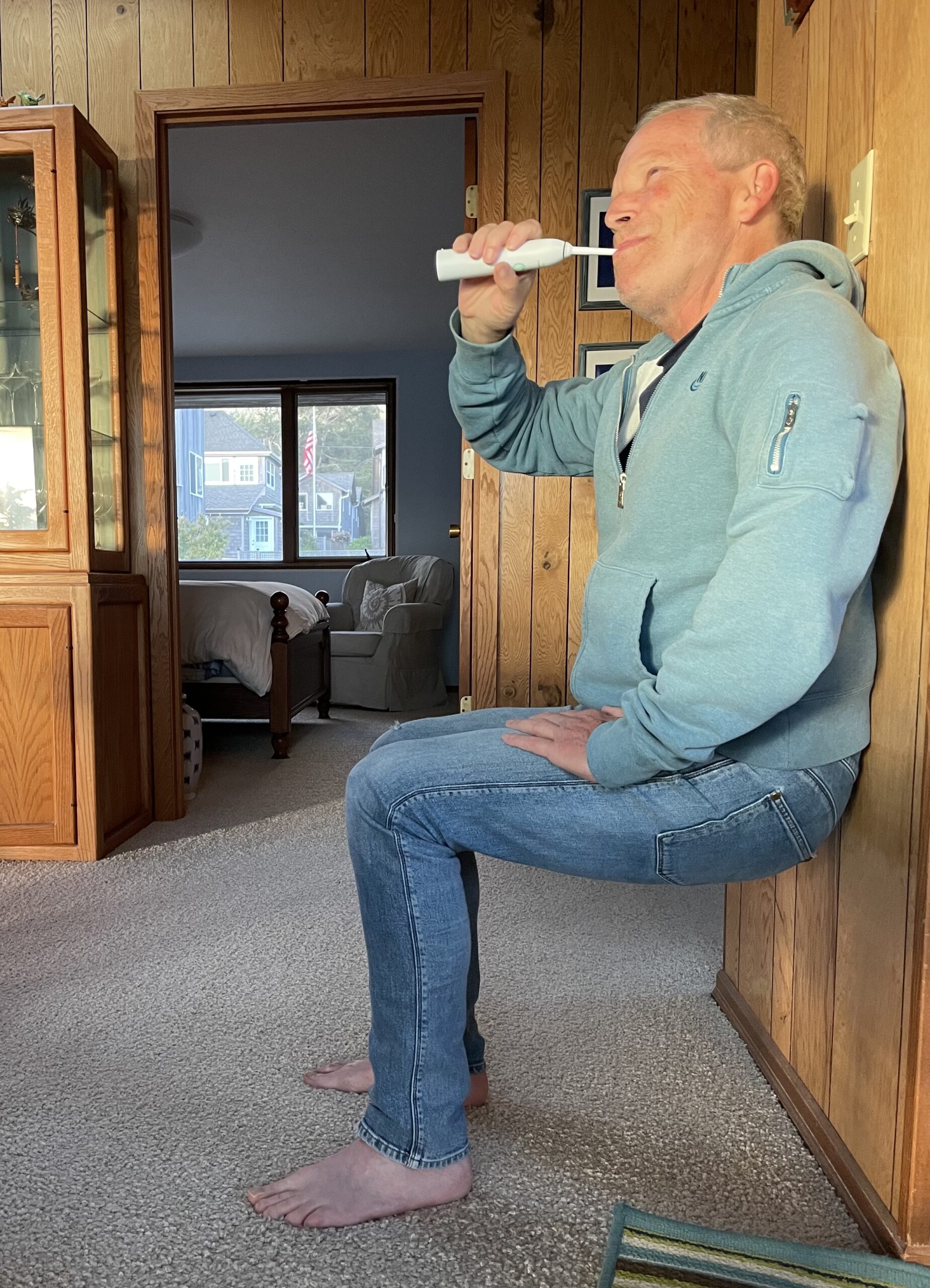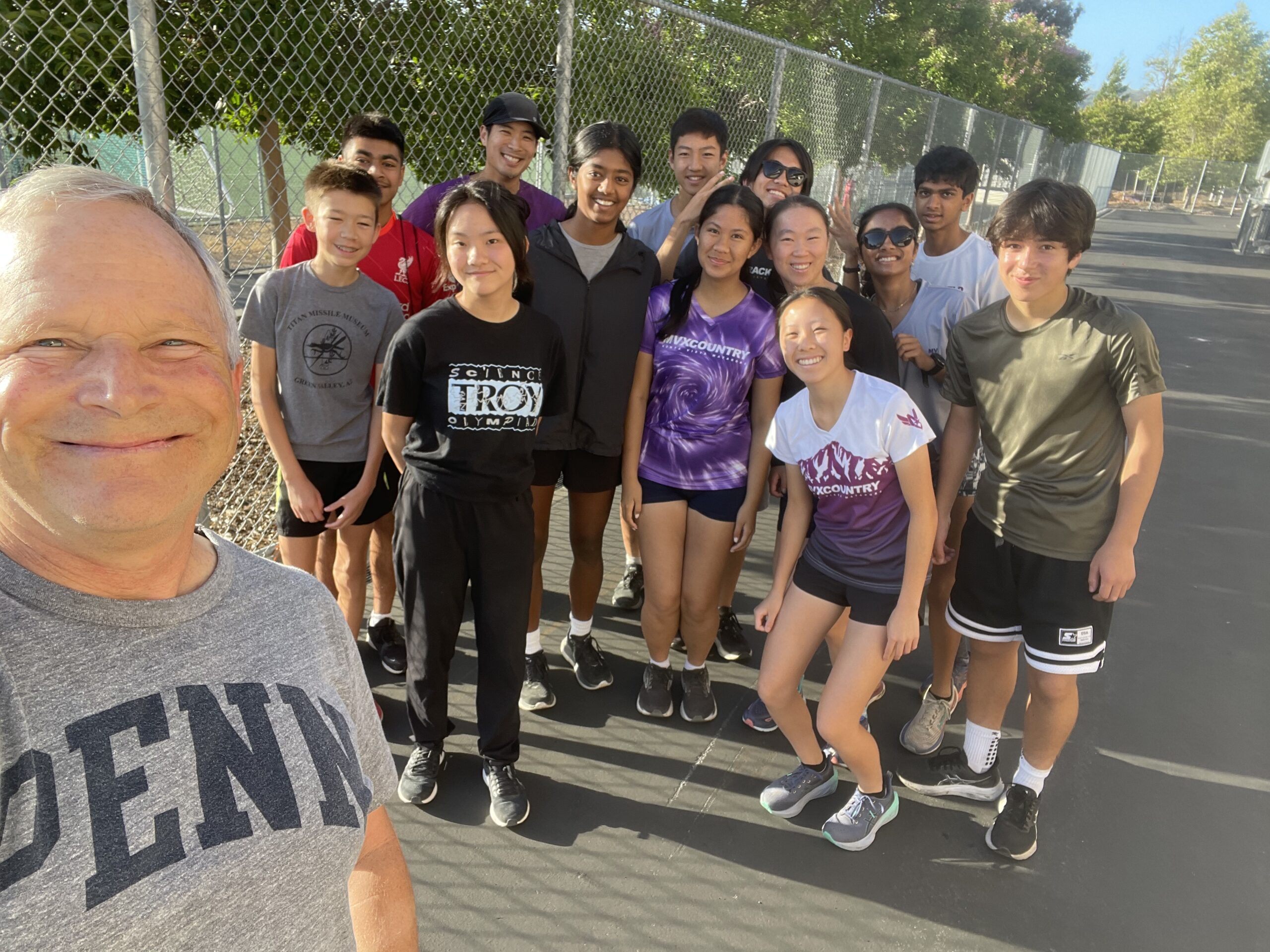
My friend Angela Duckworth and her pod partner Mike Maughan have made my morning toothbrushing routine a little more painful. Let me explain…
First, What is a Habit?
When you practice playing the piano, your brain strengthens the neural connections related to musical skills. Over time, these connections become stronger and faster, making piano playing easier and more skillful. Your friend who never played the piano is not strengthening those connections—those connections start to disappear, and our brains use those connections for other things. Skill development and habits are biological processes that help us accomplish things with less effort or intention.
Habit Stacking
Habit stacking means developing a new habit by linking it to an existing one. For example, you can use the automatic activity of brushing your teeth to build a new habit.
Last week, while listening to Angela Duckworth’s and Mike Maughan’s podcast No Stupid Questions, Mike mentioned doing wall sits while brushing his teeth. Inspired, I decided to try it myself. My electric toothbrush has a two-minute cycle, which is a good goal for a wall sit. I’ve been doing this for the last week, and I agree with Angela—wall sits hurt. However, I feel satisfied and rewarded each time I do it. In the evening, I try to do calf raises, squats, or lunges.
Some of you might remember that I recommended standing on one leg while brushing your teeth to improve balance. What Angela and Mike are doing takes this concept to the next level.
Some Tips To Make Habits Stick
Change your situation: Tape a reminder to do wall sits on your bathroom mirror (I found I was forgetting my goal so look what I did in the photo below…)
Seek support: Share your goals with others for accountability. Angela says, create a “we.” Try challenging things with partners (like summer running). I am telling you about my personal wall sit challenge–I’m trying to practice what I preach!
Use reminders: Visual cues like notes can reinforce new habits.

Will you take this challenge with me?
- Would you try to habit stack while you are brushing your teeth? You pick your own adventure…balance, lunge, calf raise, or (yikes) wall sits. Anything!
- Can you think of any other habits you want to stack on another during the day? Try to brainstorm about it this way: After/Before [CURRENT HABIT], I will [NEW HABIT].
- If you want…please drop me an email/text and share your goal. And share it with others! Let’s share ideas and grow together. Build our “we.”
Be creative–habit stacking does not have to be athletic. When I was living in Japan in 1991, I was learning Japanese. I wanted to be faster saying my numbers in Japanese. So when I went for a run, when I saw a car license plate, I would say the numbers out loud in Japanese. 8 – hachi. 2 -ni. 20 – niju. I have forgotten most of my Japanese, sadly, but the habit of stacking my language drills on top of my morning run helped me then!
Want to Learn More?
Much of this blog post comes from this podcast, and this article, as well as some of my MAPP classwork this last year (thank you, William James*).
- Listen to Angela Duckworth and Mike on No Stupid Questions, “Do you need a routine?”
- Here is a good article by James Clear (who Angela talks about in her podcast).

Finally, Here Are Suggested Workouts for Week 2 of Summer Running
Meeting your teammates at 7am on the Monta Vista track should become a rewarding habit!
Here are some key reminders:
- Take and share photos with the team
- Welcome and support new members
- Exchange contact information with new runners
- Encourage new shoes and group outings
- Tailor running goals based on individual experience
- Practice negative splits to improve performance
MVXC24 Athlete-Lead Summer Running
Week Two Suggestions: June 17
| Approx Miles | |||||
| Day | New | 35 | 45 | Suggested Run (you can change!)* | Other |
| Mon | 4 | 6 | 8 | Matadors. New runners can still come straight back from the parking lot or run a little further than they did last week. Remind everyone to be single file on the road into the park…trucks are on that road and they move fast so please be careful! 45s can run a few laps before taking off to Matadors, and they can add on by coming back by the golf course through Linda Vista. Run strides today. (You can run the strides on the dirt at Matadors, use the slight upgrade when you are coming back from the dam face and do your repeat strides up the hill, then continue your run. Your running should feel dialed in after the strides. The slight uphill will help your form and the dirt surface should feel good). | Core, shin splint pre-hab |
| Tues | 5 | 6 | 7 | Head out to Monta Vista Park and drill. Come back to school on the Palm Ave route through McClellan Ranch. New runners or runners getting back into shape can run this at conversational pace, show the new runners this route—they need to learn this route. Overachievers with big plans for the 2023 XC season can run the three miles at Lactic Threshold or Steady State Pace*. If you are really fast, add on when you get to the track so you end up with 25 minutes or more at this pace. Relax, this is not a race! | Core |
| Weds | 4
| 4 | 5 | Run to Linda Vista Park and drill, then can come back by Bubb, RR tracks or Stelling. Could also add a couple easy laps around the Linda Vista park. | Core (more legs) |
| Thur | 0 | 5 | 8 | This can be a rest day for new runners. This could be a Homestead Loop day for everyone else. | Game day!? |
| Fri | 5 | 5 | 6 | Good day for the Memorial Park run (Ria’s Run). Drill at McClellan Ranch, then loop Memorial Park and back down Stelling; back to school on McClellan Road or Rainbow depending upon mileage you need. Memorial Park often has a lot of cute dogs! Strides. | Core, shin pre-hab |
| Sat | 5 | 9 | 11 | Long run…Matadors for new runners, Horse or Horse-Garrods for the people looking for more…with a longer option of going out on Prospect and coming back on the railroad tracks. And breakfast afterwards? | |
| Sun | Something active is great! See above. | ||||
| Total | 23 | 35 | 45 | ||
*These runs are only suggestions! If leaders want to do something different…go for it!
*Steady State pace is meant to be slightly slower than your tempo/lactic threshold pace—but still faster than conversational. This pace should feel fast but relaxed. Ideally, you maintain this for 20-30 minutes and don’t feel crushed at the end. An estimate of your steady state pace is add 75-90 seconds to your current mile race pace (e.g. if your 1600 PR during the track season was 6:00, your steady state pace should probably be 7:15-7:30. If your 1600 race pace is faster than 6:00, you might add a little less—e.g. if your 1600 PR is around 5:00, add 65-85 seconds, and if your 1600 race pace is closer to 7:00, add 80-95 seconds). For most people, the 3 mile Palm route should give you 20-25 minutes of steady state pace which is right in the heart of what we are looking for. This should be comfortable but a tiny bit quicker than conversational pace. Be conscious of what this pace feels like so you can slide into this pace easily. Strides after is always a good idea.
Other notes for week two:
- New runners: teach them how to use a foam roller, especially 12xeach IT band roll! IT rolling is key for new runners. Also teach them the hamstring-in-the-doorway, quad and calf-on-step stretches.
- Do any of you have a pool in your backyard? Water running is a fun activity on hot afternoons. Water running can be fun and social!
- Reach out to incoming Freshmen!
- Maybe it is time to organize a game night or a movie night to include all the new people?

*Here is William James on habits: “Any sequence of mental action which has been frequently repeated tends to perpetuate itself; so that we find ourselves automatically prompted to think, feel, or do what we have been before accustomed to think, feel, or do, under like circumstances, without any consciously formed purpose, or anticipation of results. … The great thing, then, in all education, is to make automatic and habitual, as early as possible, as many useful actions as we can, and to guard against the growing into ways that are likely to be disadvantageous to us, as we should guard against the plague.” A little window into my last year at the University of Pennsylvania!
